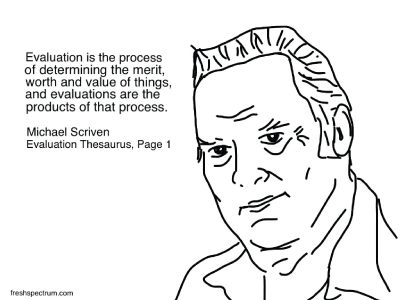© 2018 National Sexual Violence Resource Center – Fundado por la Pennsylvania Coalition Against Rape [Coalición de Pennsylvania contra la Violación]
Este sitio está apoyado por el Acuerdo de Subsidio / Cooperativo No. 6 NUF2CE002510-02-01 de los Centros de Control y Prevención de Enfermedades. Sus contenidos son la exclusiva responsabilidad de los autores y no necesariamente reflejan las opiniones oficiales de los Centros para el Control y Prevención de Enfermedades.
mapa del sitio | política de privacidad

 You may already have some basic idea of what evaluation is or what it can do for you.
You may already have some basic idea of what evaluation is or what it can do for you.